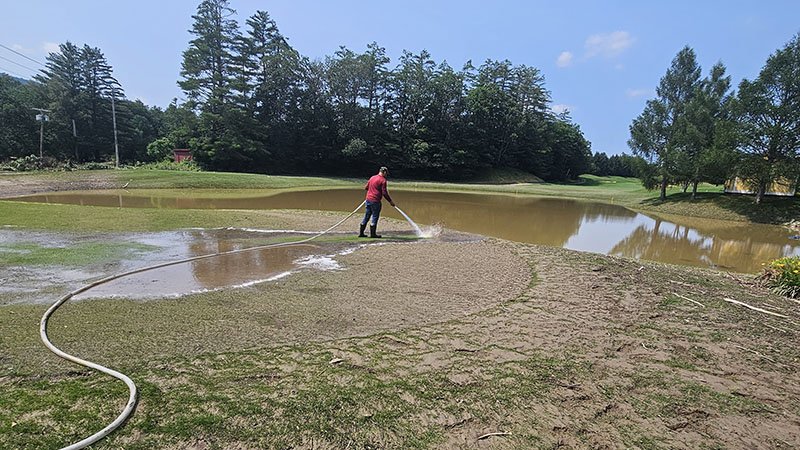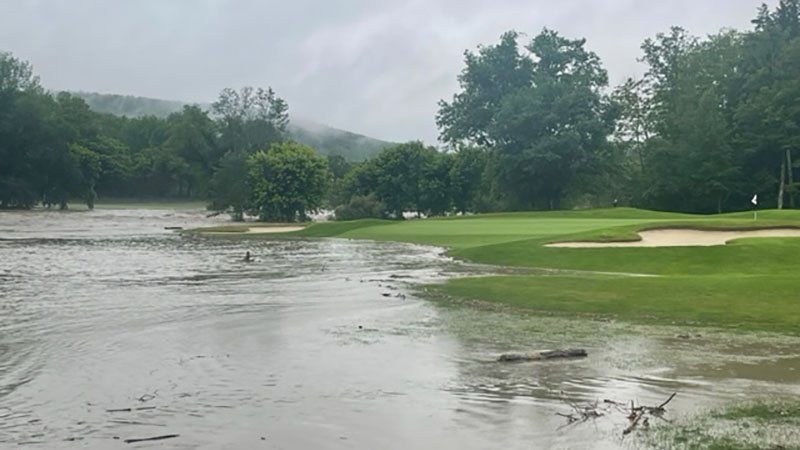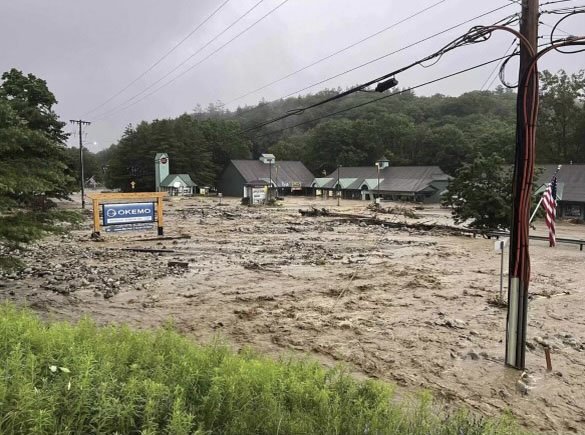
By the time more than a half-foot of rain fell during a two-day span in early July at Fox Run Golf Club, the course in Ludlow, Vermont, already had been inundated with 10 inches of precipitation in the previous three weeks.
"We were already waterlogged,” said Fox Run superintendent Jesse Sutton. "We had 19.53 inches in five weeks. And there is more rain in the forecast today.”
Mudslides and overflowing rivers from the rain that fell on July 9-10 left a trail of flooded golf courses, roads and towns across Vermont.
Some have reopened already, others will be closed for the remainder of the season — or longer.
"Everything on mountain courses that wasn't buttoned down — roads, bridges, cart paths, was gone,” said Chris Cowan of Atlantic Golf and Turf, who has spoken with many superintendents throughout the state as they continue along the path to recovery. "There was water in places where water had never been before.”
Many of the courses that were affected most, Cowan said, were those that sustained the worst damage during Hurricane Irene in 2011.
When Sutton arrived July 10 at Fox Run, which is located along the Black River at the base of the Okemo Mountain Ski Resort, he could not access the maintenance facility because the roads were impassable.
By the time he was able to get through to the maintenance facility, three members of his 15-man team were waiting for him.
"They walked up a Nordic skiing trail and through a cemetery,” Sutton said. "They were already popping off drain heads and doing whatever they could.”

By the time the water receded, much of the fairway turf was covered in silt and mud up to a foot deep and bunkers were washed out.
"It was like a river coming from the woods,” Sutton said. "There was so much debris. It was like an organic landslide of sticks, leaves and dirt.
"I had to get a mini excavator just to get to something I could work with.”
Fox Run fared better than most. The club's California-style greens, except one, were pretty much unscathed.
"We were able to open by Saturday,” Sutton said. "People were blown away. All the credit goes to my crew.”
Cowan said some courses anticipate being closed for a year-and-a-half, which will mean missing the remainder of the current golf season and most if not all of the next.
 Dozens of roads were closed across the state, including sections of U.S. 4 near Killington that were covered in up to 20 feet in debris.
Dozens of roads were closed across the state, including sections of U.S. 4 near Killington that were covered in up to 20 feet in debris.
"You see things like this on the news and it looks awful, but you can't believe how bad it is until you live through it,” Sutton said.
What amazed both Sutton and Cowan was the way area superintendents and local communities came together to help one another.
Superintendents, even those literally under water, reached out to help colleagues at other courses.
"We have a great fraternity. That was the No. 1 take-home message to me,” Cowan said. "Even the guys who were dinged up offered assistance to others who also were dinged up.”
Sutton concurred.
"Every business has some kind of water damage. FEMA is here and the national guard,” Sutton said. "Clean up started the next day.
"In town it's a volunteer effort. Residents are helping. Second-homeowners who are not full-time residents have come back to help. This has shown the good nature of people. It has been inspiring to see. When you see someone doing something for someone else, it makes you want to do something. It makes you feel good, and it becomes a domino effect.”

